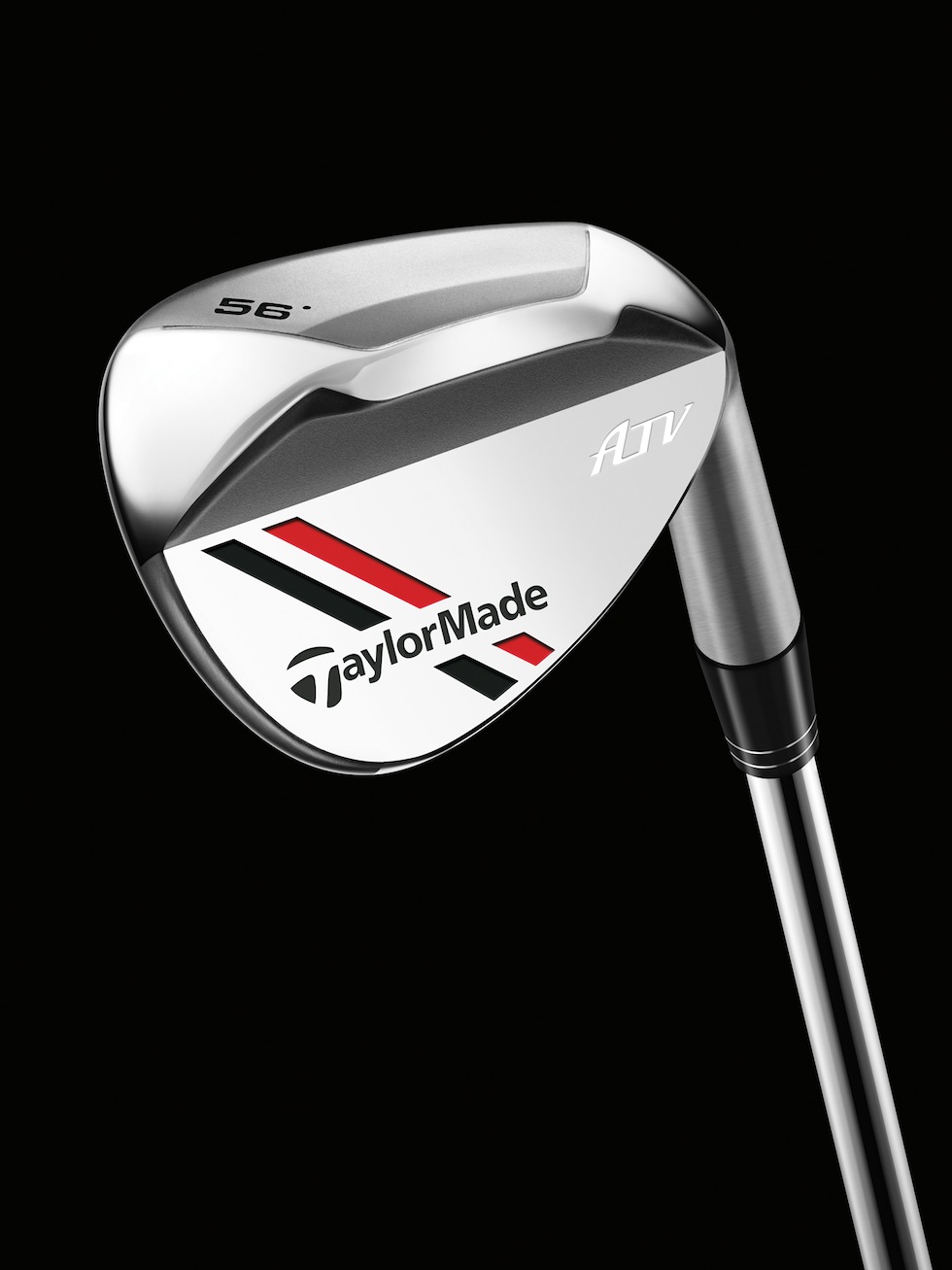 It’s a testament to TaylorMade’s insane devotion to innovation that just about every TM-related equipment review starts like this: “Not long after the release of their last technology-packed golf club, TaylorMade is back with another highly-touted line.” This time it’s wedges.
It’s a testament to TaylorMade’s insane devotion to innovation that just about every TM-related equipment review starts like this: “Not long after the release of their last technology-packed golf club, TaylorMade is back with another highly-touted line.” This time it’s wedges.
After success for a few years marketing the groove design in their wedges (Y-cutter grooves, Z-grooves), TaylorMade came out with the world’s first wedge with a replaceable sole, the xFT. It was a solid wedge on a number of levels, but not exactly on the Cleveland or Vokey echelon. This year they’ve gone away from the replaceable route, instead opting for a radical sole design.
Bounce is the name of the game when it comes to wedges. It’s invaluable in sand shots, and the most consistent short game shots are those that utilize bounce. But instead of offering copious options (like Vokey), or an extensive fitting system (like Edel), TaylorMade has gone for a one-size-fits-all approach.
Does the uniform system benefit the most golfers, or is TaylorMade leaving something on the table when it comes to individuality? Read on to find out.
Technology and Design
Utilized correctly, bounce is your best friend when it comes to shots around the green. Simply put, the bounce of a club is the degree of the acute angle made between horizontal and the sole. The bounce prevents the club from digging into the sand or the turf, and using the bounce correctly exponentially increases the forgiveness of a pitch shot.
Despite its importance, you will not find the bounce angle anywhere on a TaylorMade ATV wedge. You also won’t find a designation like “digger-slider” to differentiate a high-bounce wedge from a low-bounce wedge. That’s because every single TaylorMade ATV wedge is the same exact shape.
TaylorMade’s rationale is simple. They believe that different shots around the green require different amounts of bounce, but that the way you hold the club is adjustment enough if the club is designed correctly. Hence the name, which stands for “All-Terrain Versatility.”
The way that this club adjusts to different shots is three-fold. First, the sole is wider than on most wedges. While the actual bounce might not be all that high (TaylorMade has been extremely tight-lipped on the subject), the width of the sole means that it extends a bit farther into the turf than a normal wedge of the same bounce (much more on this later). Second, there is a convex section of the sole that hides the bounce when you don’t want to use it. And third, TaylorMade provides ample heel and toe relief to let you hit shots with the face open and closed.
After the sole design, TaylorMade’s next innovation is the face, specifically the grooves. Though they haven’t quite returned to pre-2010 spin levels, TaylorMade says that these new grooves (which remain nameless so far) produce almost as much spin as their Z-grooves, which no longer conform. TaylorMade has also incorporated a micro-texture etching.
Esthetics
The first thing you notice about the ATV wedges is that they’re anything but traditional. In addition to the radical sole design, TaylorMade has decided to jazz up the wedges, to about the extent you can jazz up a blade golf club.
The head itself uses two tones of grey. A darker color is utilized on the hosel, the sole, and underneath the notch of the sole that hangs down, while a lighter grey is used everywhere else – the rear of the club and the face.
The hosel and face designs themselves are relatively muted, but the back of the club has seen some attention. TaylorMade’s logo adorns the toe of the back of the blade, and bisecting it are two racing stripes, one black and one red.
All of my wedges in the past have been pretty tame in appearance, as are most on the market, but I can’t fault TaylorMade for wanting these to stand out a bit. If I could take an eraser to the stripes and remove them cleanly I probably would, but they’re invisible at impact and at the very least make these wedges easier to see in your bag.
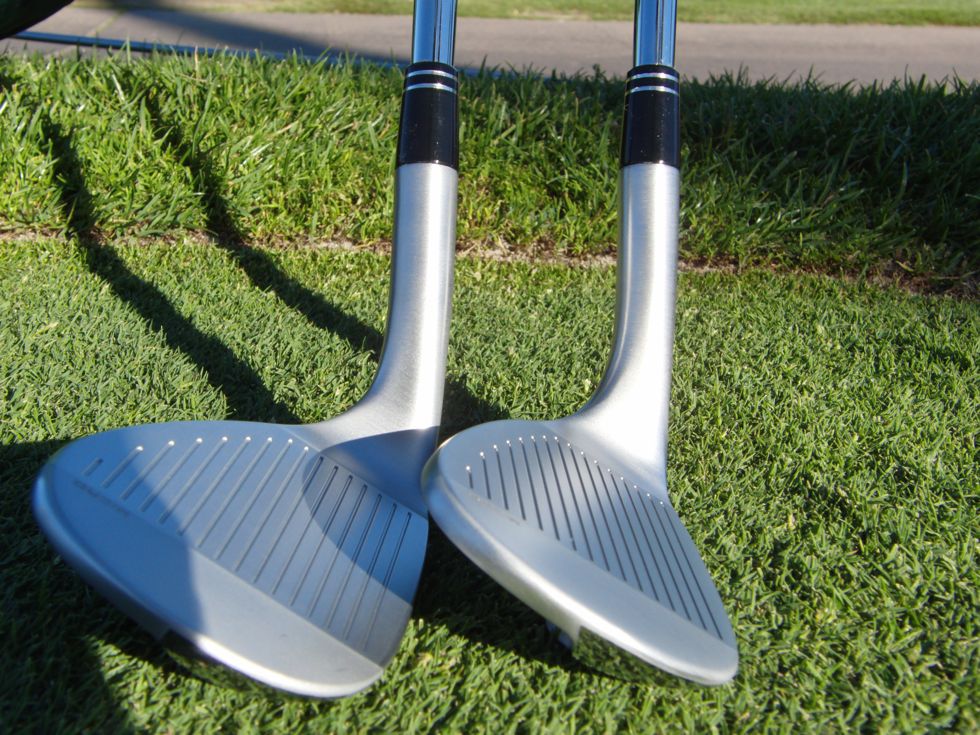
Unlike some wedges, TaylorMade has kept the sole of this club relatively clean. No “running bird” or “Cleveland” script to dig dirt out of for you OCD club cleaners, the only engraving on the sole at all is a simple degree value.
At address I did have one gripe. The leading edge on these clubs is rounded, much more like a Cleveland than the straighter look of, say, a Vokey. Just from a confidence standpoint I’ve never been a fan of the rounded look.
Performance
We come now to performance, the most important part of the review, and the aspect I’m going to tackle first is the main selling point of this club: the sole.
TaylorMade has been intentionally vague regarding the sole of this golf club. Not only do they not stamp the bounce number on the hosel, you won’t find it anywhere on the golf club, or on the bar code label, or even on TaylorMade’s website. They’re theory is that not only does one level of bounce fit everyone, this one sole can work for any shot you’re looking to hit.
I should start off by describing what they were going for here.
Bounce is your friend. Most people could do with more bounce on their wedges, especially high-lofted clubs. High bounce/low bounce is a virtual wash on bladed or thin shots, but on shots just even just a fraction heavy, the amount of bounce on your club could be the difference between hearing “you’re still away” and “why don’t you tap that one in.” Not only does bounce prevent the blade from digging in, it allows the club to glide along the ground, providing extra margin for error.
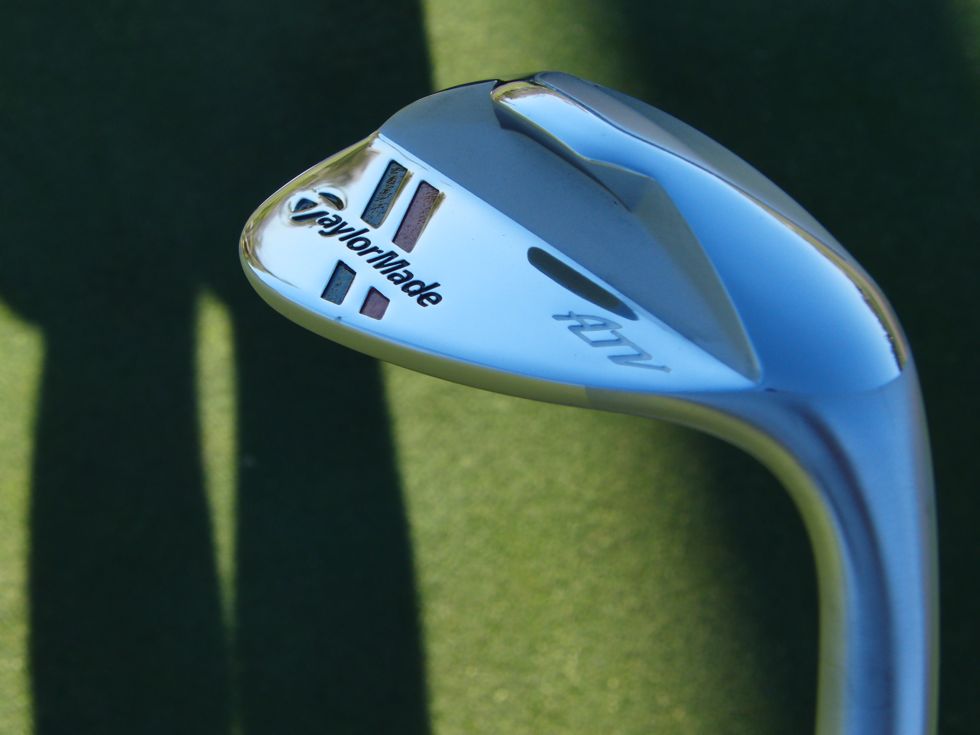
Alas, as TaylorMade has shown us, not all bounce is equal. When you open up the face of any club, you effectively add more bounce, which is the primary reason you’re always told to open the face of your wedge on a greenside bunker shot. And while opening the blade of the TaylorMade ATV wedge the same amount as, say, my old Mizuno MP-R wedge exposes the same additional degrees of bounce, because the sole of the TaylorMade is so much thicker, it performs like the bounce is much higher.
Simply said, holding the loft, bounce, and amount the face is opened constant between these two clubs, there is much more mass below the leading edge of the TaylorMade because the sole is so much wider. To put it in even simpler terms, the wide-soled TaylorMade juts into the ground more.
I carry two wedges in my bag (aside from my pitching wedge), a sand wedge and a lob wedge. The sand wedge is either 54 or 56 degrees (the one TaylorMade sent me was 56, my old Vokey is 54), and its (ahem) sole purpose is to hit 100-yard shots. It’s simply another club to me, it fills a yardage gap.
The lob wedge, on the other hand, is my go-to club for every shot under about 85 yards. I hit full shots with it, pitches, chips, flop shots, sand shots, everything. I like the club to be versatile, but since I use it out of the sand (I like the extra height it gives me versus my sand wedge), I need something with enough bounce to prevent me from digging in. The relatively high amount of bounce allows me to do things I couldn’t otherwise do, and it doesn’t prevent me from doing things I want to do.
If you’re not utilizing the bounce on most of your short game shots, you’re probably not getting the most out of your abilities. Was there a break-in period with these wedge? Of course. I had to tell myself to intentionally aim slightly behind the golf ball, and I saw good results with a more shallow pitching motion. This, in addition to the bounce, allowed the club to glide along the ground, and I had much more room for error.
I hit shots using the sole of this TaylorMade I’ve never hit before. I could swing just about as hard as I wanted while still getting the ball to just pop up in the air nicely, because I didn’t have to worry about chunking it. The ease of which I could slide the thick sole of the ATV wedges under the ball was pretty amazing.
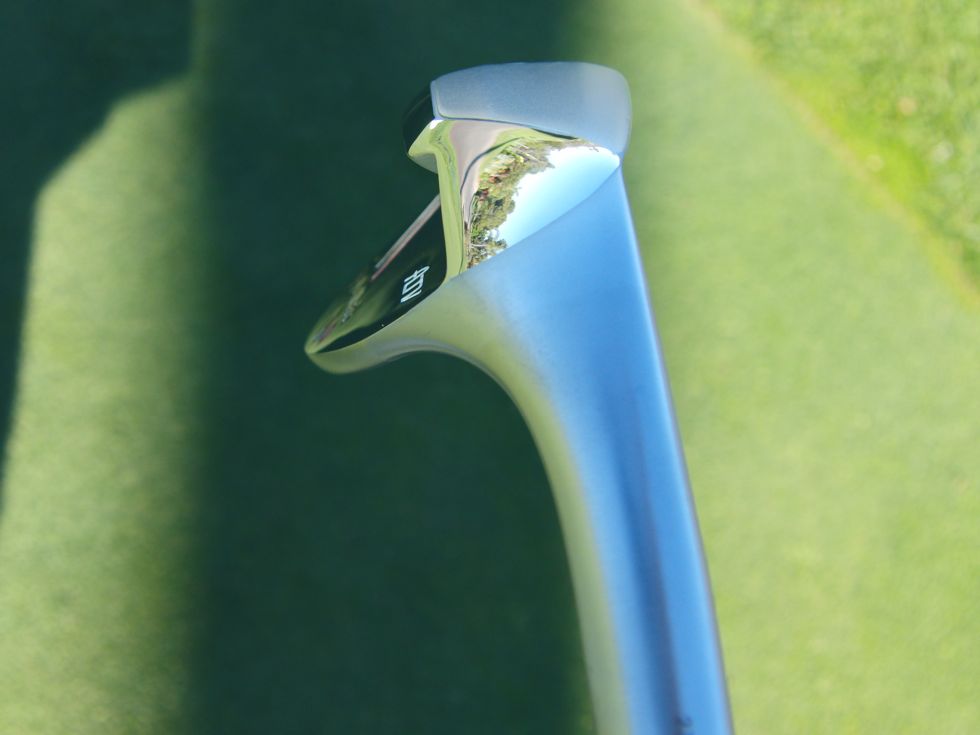
There is a learning curve, that’s for certain. If you still believe Phil Mickelson hinges-and-holds (he doesn’t) and you’re determined to do that (good luck), well, these probably aren’t for you. But if you’re willing to make the short game less exacting, less demanding of perfect timing, the ATV wedges should perform admirably in pitch shots, flop shots, sand shots, and chips.
On full wedge shots they performed just like you would hope and expect them to. The ATV wedges have a nice weight to them, and sole performs admirably on full shots.
My biggest gripe is that they didn’t just add degrees of bounce rather than increasing the sole width. The ATV wedges provides a bit of chunk-resistance when the blade is square (slightly more than a normal wedge), but the extra help only really kicks in when you open the blade. If they just added degrees of bounce you would get the benefit on all shots, truly reaching the versatility TaylorMade was going for.
There are other features of these wedges that aren’t so great. As I mentioned earlier, I don’t like the rounded look of the sole. For some reason it screams “skull this ball over the green and into the woods!” at my brain, and it remains a bit of a sticking point for me. I’m sure some people love the look, it’s just not for me.
OEMs have had several years now to adapt to the not-so-new-anymore groove rule, and though some of them are touting grooves that are nearing pre-2010 levels (including TaylorMade), I haven’t found a wedge yet that replicates that level of spin. The grooves on the TaylorMade ATV wedges seem about average compared to what’s on the market today. Maybe slightly above average, but certainly not the best.
The ATV wedges are cast out of 304 stainless steel, and feel just fine, but it’s not the softest club I’ve ever felt around the greens. I wouldn’t call it “harsh” by any means, but it’s well short of “soft.”
Specifications
I generally get rid of the stock grips pretty fast (except for those on the Adams Fast 12 wood and CB3 irons I reviewed earlier this year, which had pretty great stock grips) when I buy a new club, but TaylorMade actually put some thought into the ones on these wedges, so I kept them on for the duration of this review. They’re pretty simple, basically the design from Golf Pride’s Tour Velvet, but they’re over an inch longer than most grips. If you need to get fancy with a shot around the greens, you have a bit more real estate before your hands are on the steel. They also have two circles down near the shaft, for consistent choking-up.
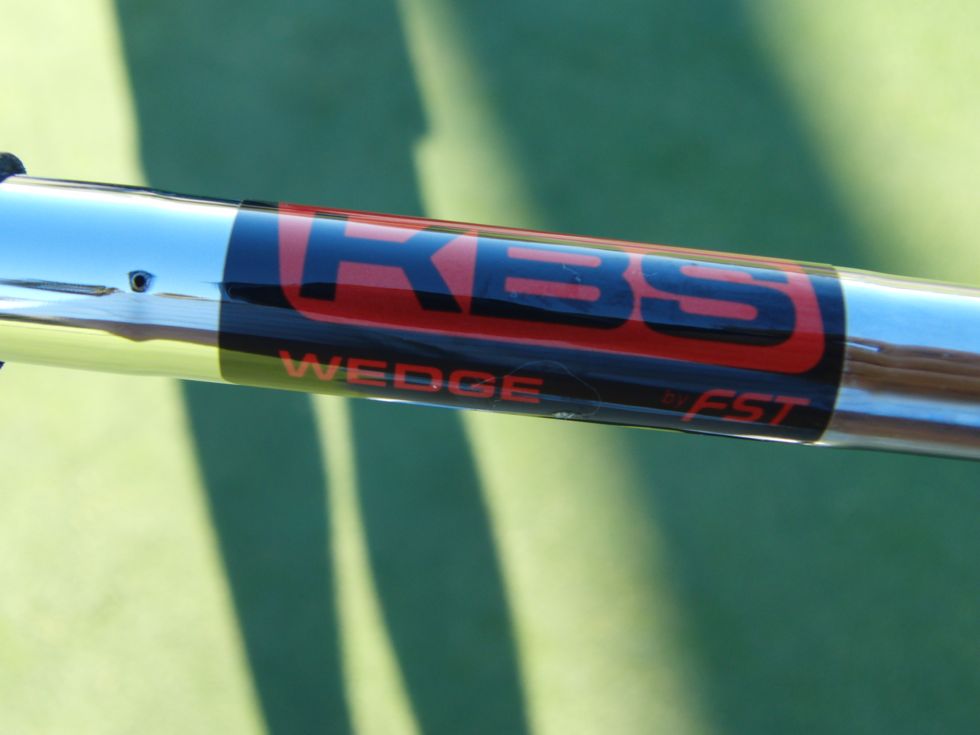
The steel in the ATV wedges is a KBS Wedge shaft, a derivative of one of my favorites on the market today, the KBS Tour. It’s an incredibly stable shaft, stiff but not boardy. It never surprises me, which is, in my opinion, the best thing you can say about a shaft. It will flex just a bit when you really need to load it and squeeze out five extra yards, but at no point was it whippy. The weight is well balanced and fits nicely with the ATV’s headweight.
Loft Length Lie Swing Weight Head ---- ------ --- ------------ ----- 50 35.5" 64° D3 R 52 35.5" 64° D3 R,L 54 35.25" 64° D4 R 56 35.25" 64° D4 R,L 58 35" 64° D5 R 60 35" 64° D5 R,L 64 35" 64° D5 R
Conclusion
These wedges have met some backlash from the golfing community (as much as a TaylorMade wedge could get, really), but from where I stand, it’s somewhat undeserved. If you use a Vokey 60-degree with four degrees of bounce, and you continue to struggle with shots around the green, your wedges are not helping you. Four degrees on a wedge is practically suicidal, and only really aids you in hitting one sort of shot.
TaylorMade’s ATV wedges aren’t the perfect wedge, far from it. I wish they’d have gone about the bounce issue a bit differently, the grooves aren’t great, and I don’t like the shape of the leading edge. But they’ve earned a spot in my bag because they take the chunked shot almost completely out of play, and perform admirably from all sorts of spots around the greens.
If you’re in the market for new wedges, you owe it to yourself, for the simple sake of making this stupid game easier, to take a look at your short game, and to take a look at the ATV wedges.

Great review, thanks James. This club looks awesome. I’m probably the same in that I’d be scared of skulling the ball deep into the woods with the rounded sole, but it’s definitely interesting to see a wedge this versatile. I’ve gotta give it to TaylorMade…they’re damn good at marketing!
Jamo,
Good review. Variable functioning of the sole explained well – I couldn’t figure out how it was supposed to work from the ads.
Note: Check the shaft lengths in your spec chart. The 50° at 44.5″ appears a bit long for a wedge.
Huh. Not exactly sure how I could have managed to get all of the shaft lengths wrong while getting the rest of that chart right.
Tried them ta a local course, hit 100+ balls from various lies and found these clubs super easy to hit, much easier than my dated Clevelands. I summer in Maine and winter in Florida and the ATV design seems well designed for these varying conditions. I ordered 50,55 and 60
Great review! I play the TM R9 irons with KBS shafts and I’m a huge Taylor Made fan. I’m a 9hdcp but not a ton of swing speed and not always pure ball striking so I don’t play the Tour or the Tour shafts. The R9 set comes with a 46-degree PW and a 50-degree “Attack” Wedge…this caused me to swap my old 52,56,60 set-up for what I play now, Cleveland 54 and 58 (I bought the pre-2010 square grooves). I struggle with full-swing wedge play (I often blade a 90 yd birdie opp into a double) and I suspect the Wedge Flex shaft is part of the problem (over swinging being the other! maybe not maintaining hinge, etc). I love the 50-degree A Wedge and I struggle with my 54…I hit the 50-degree up to 110yds with ease and can;t hit my 54 Cleveland past 85yds… any thought about the ATV wedge with standard KBS shafts (as opposed to the wedge shafts?
Fock yes I love these sweet ass wedges. Just picked up a 54 and 58° to add to my RSi1 irons. Bought a Yes Callie-12 C Groove putter, a pair of Adams A12os hybrids and a Cleveland Classic 12° driver to round out the bag. Got the New 2015 C130 cart bag in cobalt blue to match my seahawks towel. Fock yeah I’m super duper stoked and Goooooo Hawks beat the butt cheese!!!!!
I have my 52 atv use it everywere from 115 to the fringe.
Hi. I want to buy the 56 and the 60. Please